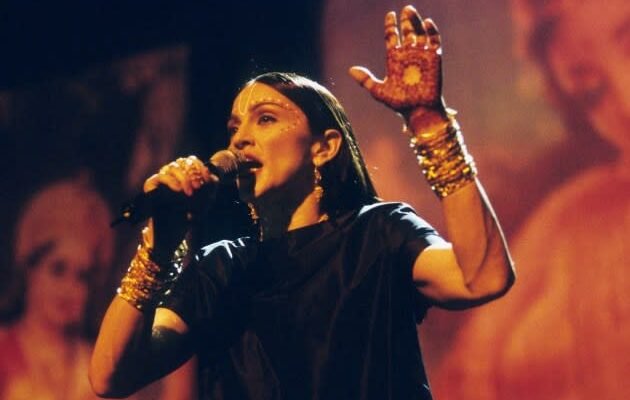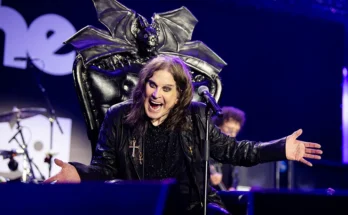In a surprising and long-awaited revelation that has thrilled fans and music historians alike, Madonna has announced that next month she will finally release Veronica Electronica, a long-lost album conceived during the late 1990s and shelved for over two decades. Originally envisioned in the aftermath of her groundbreaking 1998 album Ray of Light, Veronica Electronica will now emerge from the archives with eight remastered tracks from Ray of Light, offering fans a unique glimpse into a creative era where Madonna redefined both herself and pop music.
A Long-Lost Creative Chapter
The announcement comes 27 years after Madonna first conceived the album in 1998. At the time, she was riding high on the critical and commercial success of Ray of Light, an album that marked a major artistic reinvention. Embracing electronic and ambient sounds, Ray of Light not only cemented Madonna’s relevance in the late ’90s music scene but also opened new frontiers for electronic pop on a global scale. It won four Grammy Awards and is widely regarded as one of the most influential pop records of the modern era.
Amid the whirlwind of that success, Madonna quietly began working on a follow-up project: Veronica Electronica. This album was intended to delve deeper into the ambient, spiritual, and experimental territory introduced by Ray of Light. The concept was personal, experimental, and introspective, reportedly exploring themes of motherhood, mysticism, and technology. But as the music industry shifted and Madonna’s focus moved to new projects — including her 2000 album Music — Veronica Electronica was shelved and all but forgotten by the public.
Now, nearly three decades later, Madonna has dusted off the archive and is preparing to share a chapter of her artistry that fans never got to experience.
The Resurrection of a Cult Myth
For years, Veronica Electronica existed more as a myth among diehard fans than a tangible piece of Madonna’s discography. Over the years, demos and remix fragments circulated among collectors, but the project remained officially unreleased. The name “Veronica Electronica” itself was more of a fan moniker than a confirmed title — until now.
In her recent announcement on social media, Madonna confirmed the album’s release with the caption: “Veronica is real. She was born in 1998. She waited. Her time is now.” The post was accompanied by cryptic visuals — a blend of VHS-era graphics, kaleidoscopic imagery, and throwback photos of Madonna in her Ray of Light era — signaling both a nostalgic and modern take on the album’s aesthetics.
The announcement sent shockwaves through the music community, with fans and critics alike eagerly dissecting the significance of this long-buried project finally being released.
What’s on the Album?
Veronica Electronica will reportedly contain eight remastered tracks, all originating from the Ray of Light sessions or developed in their immediate aftermath. While the full tracklist has not been officially revealed, insiders suggest that the album will include:
- Remastered alternate versions of “Skin,” “Sky Fits Heaven,” and “Frozen”
- A longer ambient edit of “Mer Girl”
- A previously unreleased collaboration with William Orbit, who co-produced Ray of Light
- Two instrumental interludes originally intended for a visual installation project
- A final track featuring Madonna reading spoken word poetry over a minimalist electronic soundscape — a style she briefly explored in the early 2000s
According to Warner Records, the remastering process stayed true to the original analog elements, preserving the haunting, ethereal quality that defined Madonna’s late ’90s sonic identity. The production, supervised by Madonna herself alongside a team of sound engineers and Orbit, aims to balance fidelity with artistic evolution — presenting the album as both a time capsule and a contemporary work of art.
A Cultural and Personal Milestone
More than just a collection of remastered songs, Veronica Electronica represents a cultural time capsule — a look into Madonna’s psyche during a pivotal moment of reinvention. The late 1990s were a time of spiritual searching for the Queen of Pop, marked by the birth of her daughter Lourdes, her interest in Kabbalah and yoga, and her embrace of a more introspective public image.
At that time, Madonna was also confronting the reality of aging in a youth-obsessed industry, all while setting new standards for artistic control and reinvention. Veronica Electronica, created in that crucible of change, is expected to carry a deeply reflective tone that contrasts with the bold sexuality and extroversion of earlier works like Erotica or Bedtime Stories.
The album also coincides with renewed interest in Madonna’s legacy, following her successful Celebration Tour, the upcoming biopic project reportedly in the works, and the broader reevaluation of pop women pioneers in the streaming era.
Fans and Critics React
The response from fans has been overwhelmingly enthusiastic. Social media erupted with praise, speculation, and nostalgic tributes following Madonna’s announcement. Long-time fans see the release as both a long-overdue reward and a sign that Madonna remains deeply connected to her artistic roots.
Music critics, too, are eager to assess the album not just for its musical content, but for its historical and cultural significance. If Ray of Light was Madonna’s spiritual awakening, Veronica Electronica might well be the missing link between the ethereal and the digital Madonna — a bridge between her past and her futuristic aspirations.
What’s Next?
The release of Veronica Electronica, set for July 2025, is more than just an archival revival. It’s a statement — one that reinforces Madonna’s role not only as a pop icon but as a cultural archivist of her own legacy. In reclaiming this lost album, she’s reminding the world that even in an age of disposable singles and algorithm-driven playlists, music can still be timeless, mysterious, and worth waiting nearly three decades to hear.
As fans count down the days, one thing is certain: Veronica Electronica is no longer a myth. She’s real, she’s electronic, and she’s finally ready to be heard.



